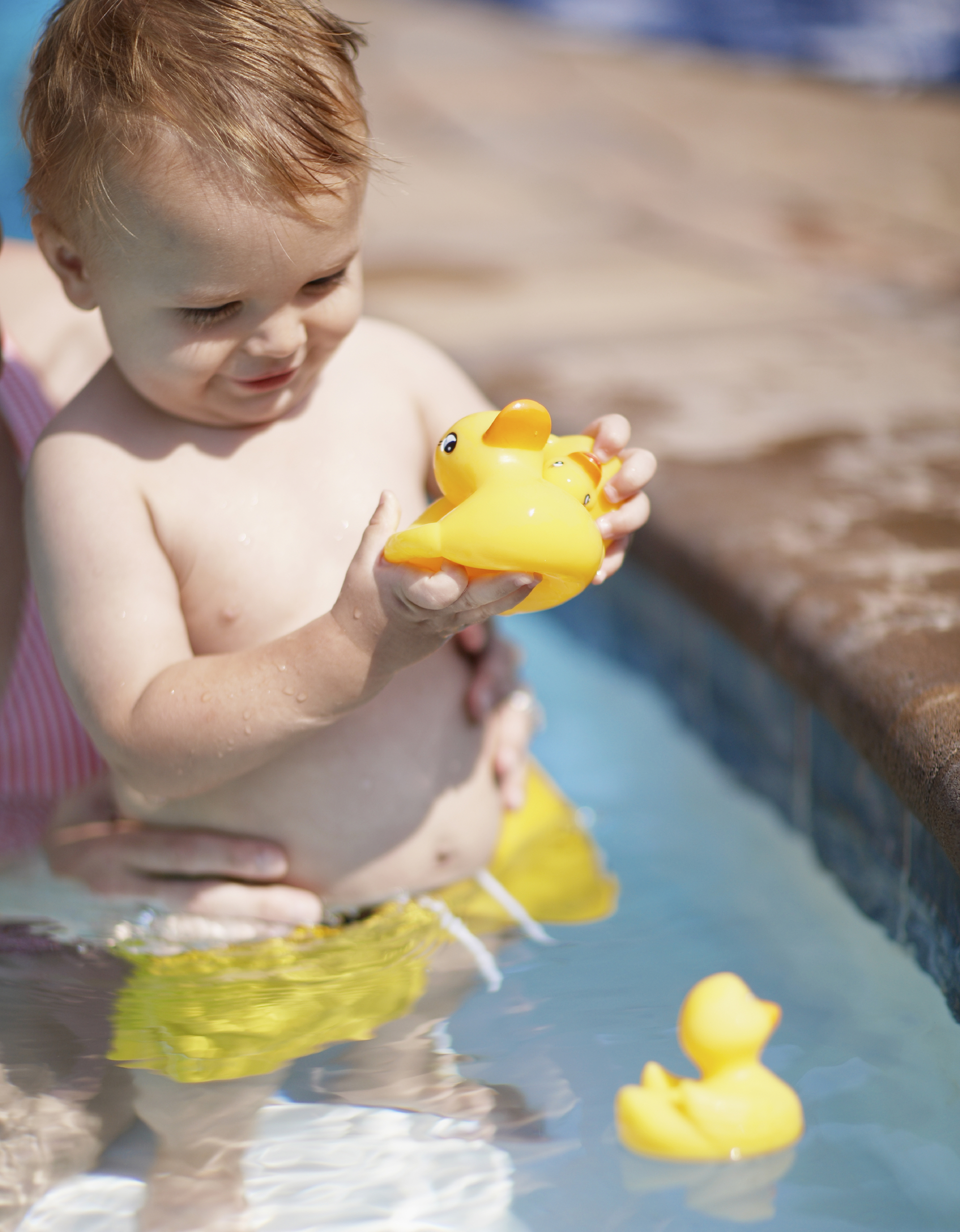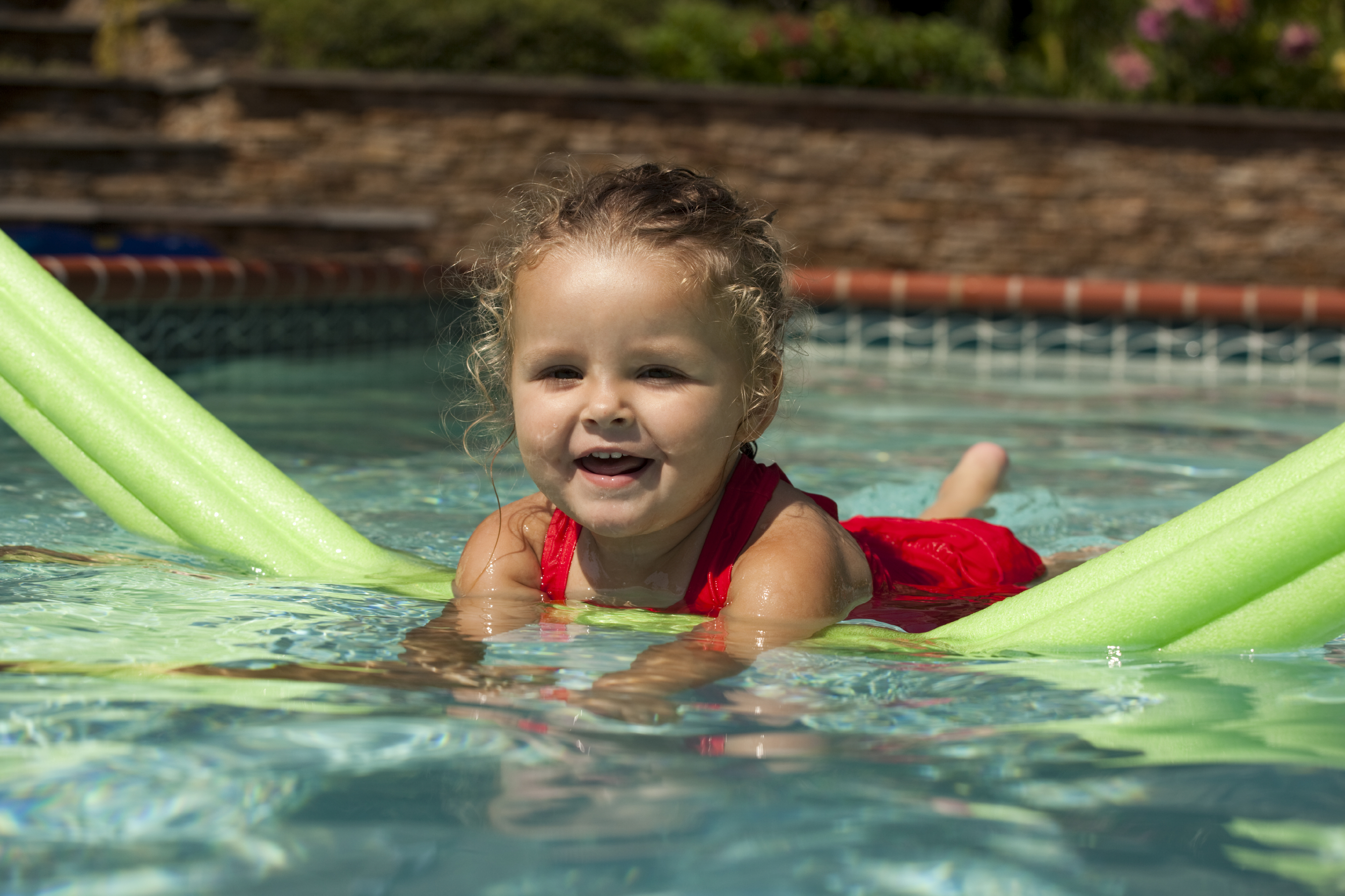 I’m sure you’ve heard it before, but it’s worth repeating here: repetition not only works, it is critical to success.
I’m sure you’ve heard it before, but it’s worth repeating here: repetition not only works, it is critical to success.
Repetition is how our children play. It’s how they understand. Repetition is how they get comfortable with skills that, at first, are challenging and unfamiliar—like swimming. When it comes increasing ability and safety in and around the pool, there’s no better ally for our children than the muscle memory developed through repetition.
Repetition benefits Parents and InstructorsRepetition gives us the chance to figure out how our children are doing in the pool. Are they ready for me to back off? Are they ready to try a skill that you’ve been working on together all on own their own? Aside from all that, it’s just more fun. We don’t have to figure it all out at once. We can just sit back and enjoy it for a while.
A quick example: breathingOur children, like us, naturally know how to breathe. But how much repetition is required before they learn how to use their breath control to manage their feelings? Ten? Twenty? One hundred? One thousand times? They need time to practice the mechanics of control. Then they need time to experience how slowing their breathing can soothe their anger, fears, and tears.
Repetition is a key to successThe benefits of repetition is one of the grand themes of Maria Robinson’s wonderful book on Child Development. It’s the key to success in motor development. That’s precisely why Sunsational lessons and specifically Toddlers lessons have tons of playful and critical repetition built in.
So, let’s talk about how to get the most out of repetition by showing, telling, and doing it.
SHOW
Don’t tell first, first just do
Child learn through observation. In fact, Kushnir says, “Babies are like little scientists. They gather evidence by observing and experiencing the world.” Moreover, our silence helps both them—and us—focus what we’re doing instead of what we’re saying.
Show them the entire sequence of the skill first. Imagine that we are teaching them a song. We sing the whole song through first to give them a feeling for the tune, for how the song goes. Hearing the whole song gives them context for the steps we are going to emphasize next.
Show each stepShape your skill into two or three steps. Think of those steps as sentences with a full stop at the end of each one. That is, complete a step, pause to make eye contact—but don’t stop if it doesn’t happen, and then move on to the next one. Make each step large and full and dramatic. For example, a deep breath into the belly, followed by a tightly closed mouth, followed by a deep look in your child’s eyes before you go under the water.
Start and end with eye contactStart and end the demonstration of each skill by making eye contact. Eye contact is like the large, ornate capital letter gracing the opening sentence of a children’s book. It’s there to get our attention and to make us pause. However, once you get eye contact, don’t worry if the eye-contact is not sustained. Instead, proceed directly into the skill you are demonstrating. When you are done, make eye contact again—to show with your eyes, body, and face that the skill is safe and fun.

TELL
Describe what you’re going to doAfter you have demonstrated the skill three times silently, describe the skill—again in two or three steps. Children learn by our talking to them—and develop language for talking about their own actions. For example, “I’m going to take a deep breath, close my mouth, and then put my head under the water.” As you go under, maintain eye contact with them out of the water above you, smiling to show that you are relaxed and blowing bubbles out of your mouth to preview the next step.
Reward what they didLet them try the skill with you. Regardless of the result, reward them with a big hug. Don’t worry about reinforcing unsuccessful behavior. Those overriding message of your hug is “I love learning how to swim with you.” Any confusion will be totally overpowered as we continue to repeat our bold, specific steps.
Describe what they didTell them what they did—and reward them for it again. Use the same words you used to describe your steps. “Yay! You took a deep breath.” Demonstrate that step together—and, yes, reward them again.
Describe the next stepSo, for example, let’s say they have mastered taking a big breath, but are still working on closing their mouth. After you describe the step they did—and reward them for it, then describe the next step you would like them to add. “Great! Now close your mouth. Can you try that with me?” You can add squirrel cheeks or other silly or fun faces that go with closing our mouths.
Break the next step into smaller stepsWhen you shift your focus to a specific step, break that step down into smaller steps. For example, if you’re working on closing your mouth, you might open it really wide first, then close it tight, and then check it with your fingers as your cheeks swell up to make sure that it’s closed. Again, first just show these smaller steps. Then after you have repeated them three times, you can add words to describe them.
REPEAT
Let them try itDo the activity with them silently. Do it with them with words. Let them do it alone. As described above, talk to them about what you saw then have them try it again. Reward and then describe what you saw. Break down further any steps that are challenging. Have them try it again. After this basic three-peat sequence, let them repeat it as many times as they want—introducing some variations given below.
Add a toy or toys
By adding a toy we turn the activity into a game. If they like to hold onto the toy they’ve “earned,” introduce two or three toys for them to collect. This is great way to encourage movement around the pool. You should try to visit all areas of the pool during your pool time together so that your child becomes familiar with all its nooks, crannies, and eccentricities.
Add a noodle or kickboardWhen you add or noodle or kickboard, make sure that its addition is playful and fun. Why? Because attempting a skill on a noodle or kickboard often increases the level of difficulty. It engages the arms and legs in a different way. It forces our children to adapt their actions to new conditions. All of this can and should be fun.
Change up your supportHave you been holding them in front of you? Try it again with them using your front for support. Then have them try it again while you support them on your back. All of these supports require different types of holding on. Changing positions both develops their coordination by giving them the chance to rest and employ different sets of muscles and movements.
Change up your locationHave you been working near the steps? Move down to the wall. Have you been working in the shallow end? Move to the deep. Your child should be familiar with every inch of your pool. You also want them to experience how your support changes when you’re standing on the bottom versus doggie paddling or kicking to keep your own body afloat as well as theirs.
EXPERIENCES
The main point is repetition is not boring. It doesn’t mean doing the skill in the exact same way every time. It does mean spending a lot of time repeating a few basic steps so that our children can put those steps into their understandings and into their bodies. Each repetition is a chance to experience the joy and wonder of trying it again. Cheers! … Robert
 Written by Robert R.,
Written by Robert R.,
Swim Instructor in San Francisco Bay Area – North Bay
Bio: Robert has worked as a child-care provider for children between the ages of 0 and 2 for the past four years, specializing in swimming and outdoor experiences. He never ceases to be amazed by young people’s ability and desire to respond to strange environments and unexpected challenges.
ABOUT SUNSATIONAL SWIM SCHOOL
Sunsational Swim School is the 🥇 #1 rated provider of private, at-home swimming lessons in America. We have specialized swim instructors for students ages 6 months to adult, beginner to advanced. Featured on ABC, CBS, Impact 100, The List and others, Sunsational instructors have a minimum of 2 years of teaching experience, are CPR certified and insured, and have collectively taught over 302,223 lessons for more than 74,415 students nationwide!

